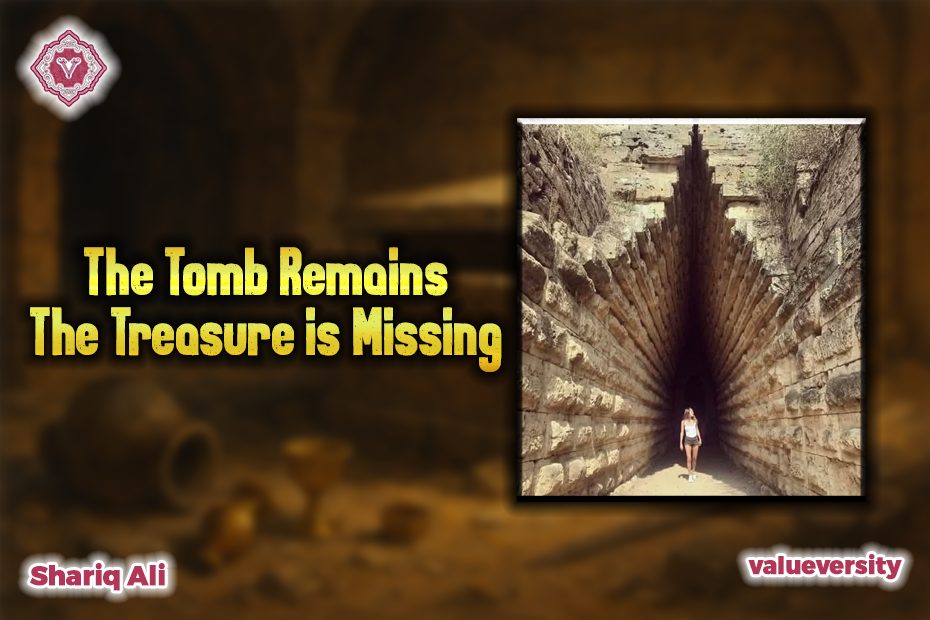The Tomb Remains, the Treasure is Missing
Shariq Ali
Valueversity
It was a cold morning in February 1837. Near the ancient Crimean city of Kerch stood a massive mound of earth, silent for centuries. People knew this was no ordinary hill — some hidden secret surely lay inside it. To uncover that mystery, archaeologist Anton Ashik had been searching for years.
Finally, after days of labor and exhaustion, Anton and his team succeeded. They discovered a hidden doorway inside the mound. When they entered, they were stunned! This was not just a hill but a royal tomb — the final resting place of an ancient king, today world-famous as the Royal Kurgan.
What was inside?
Inside lay a long, straight passage known as the dromos. It was about 37 meters in length. At its end stood a circular stone chamber with a tall dome above it. Remarkably, the dome had been built without cement or mortar — only with the careful arrangement of stones, each supporting the other with its weight, as if bound together by some ancient magic.
The ceiling was so high it seemed like a three-story building. This magnificent structure was almost 2,400 years old, from a time when there were no bulldozers, no cranes, and no electricity.
Whose tomb was it?
Historians believe it belonged to Leucon, a king of the Bosporan Kingdom. This kingdom arose from the fusion of Greeks and Scythians, blending two different civilizations.
Where did the treasure go?
When the tomb was opened, only wooden remains were found — no gold, no silver, no precious jewels. Experts think the tomb had been plundered thousands of years ago.
Another intriguing detail
On the walls of the chamber, some crosses were discovered, evidence that centuries later, Christians had used the tomb as a place of worship or refuge.
Why is this place special?
The Royal Kurgan is not just a tomb but a grand architectural marvel, clearly showing the craftsmanship of both Greek and Scythian traditions. It proves that humans, even centuries ago, were intelligent, hardworking, and artistic. Their tools were few, but their wisdom, passion, and creativity were immense.
This discovery teaches us that beneath the earth lie not just remains but entire eras asleep. When we excavate history, glimpses of the past, the artistry of craftsmen, and the creative power of humanity rise before us. The Royal Kurgan is one such window that carries us thousands of years back in time.
